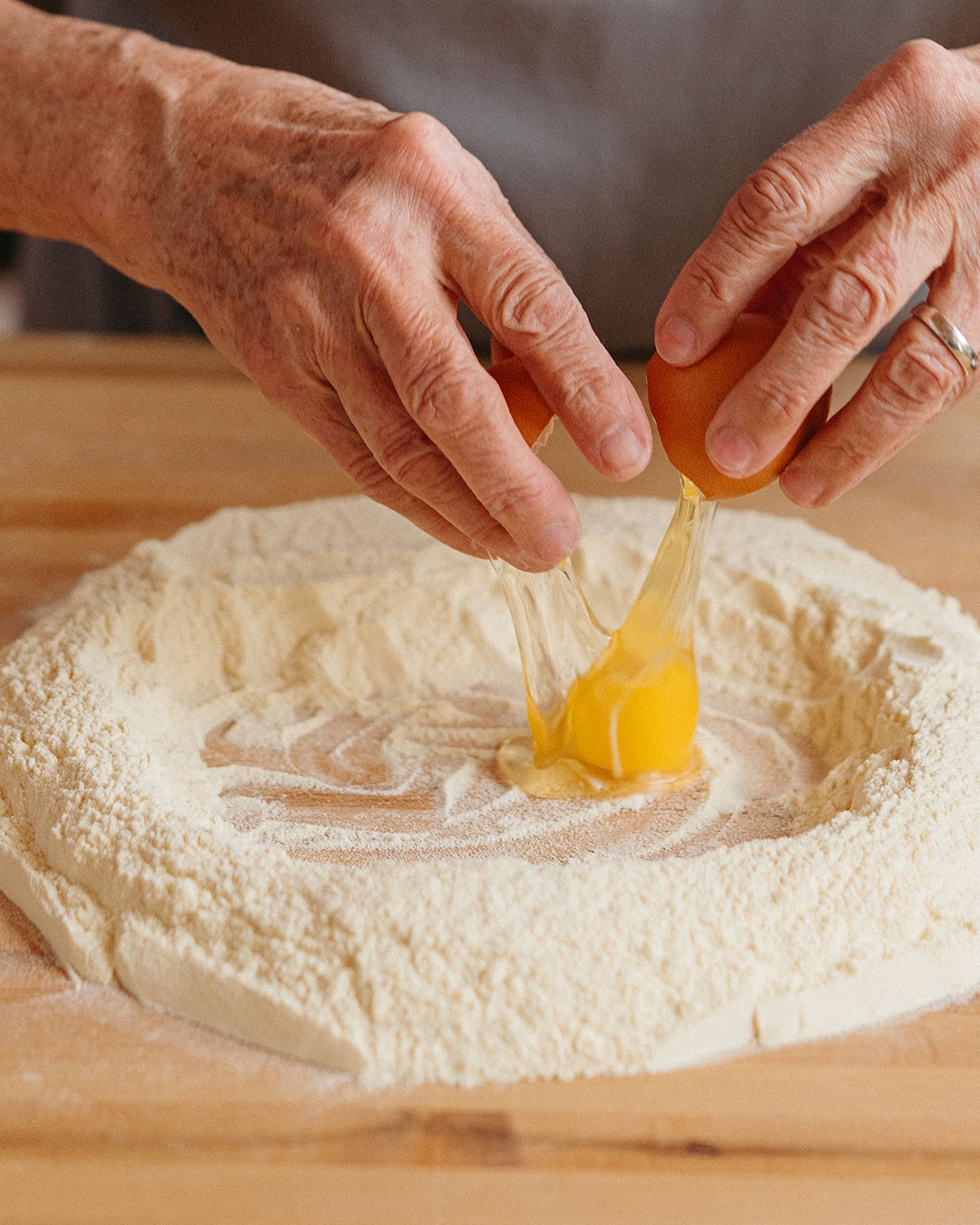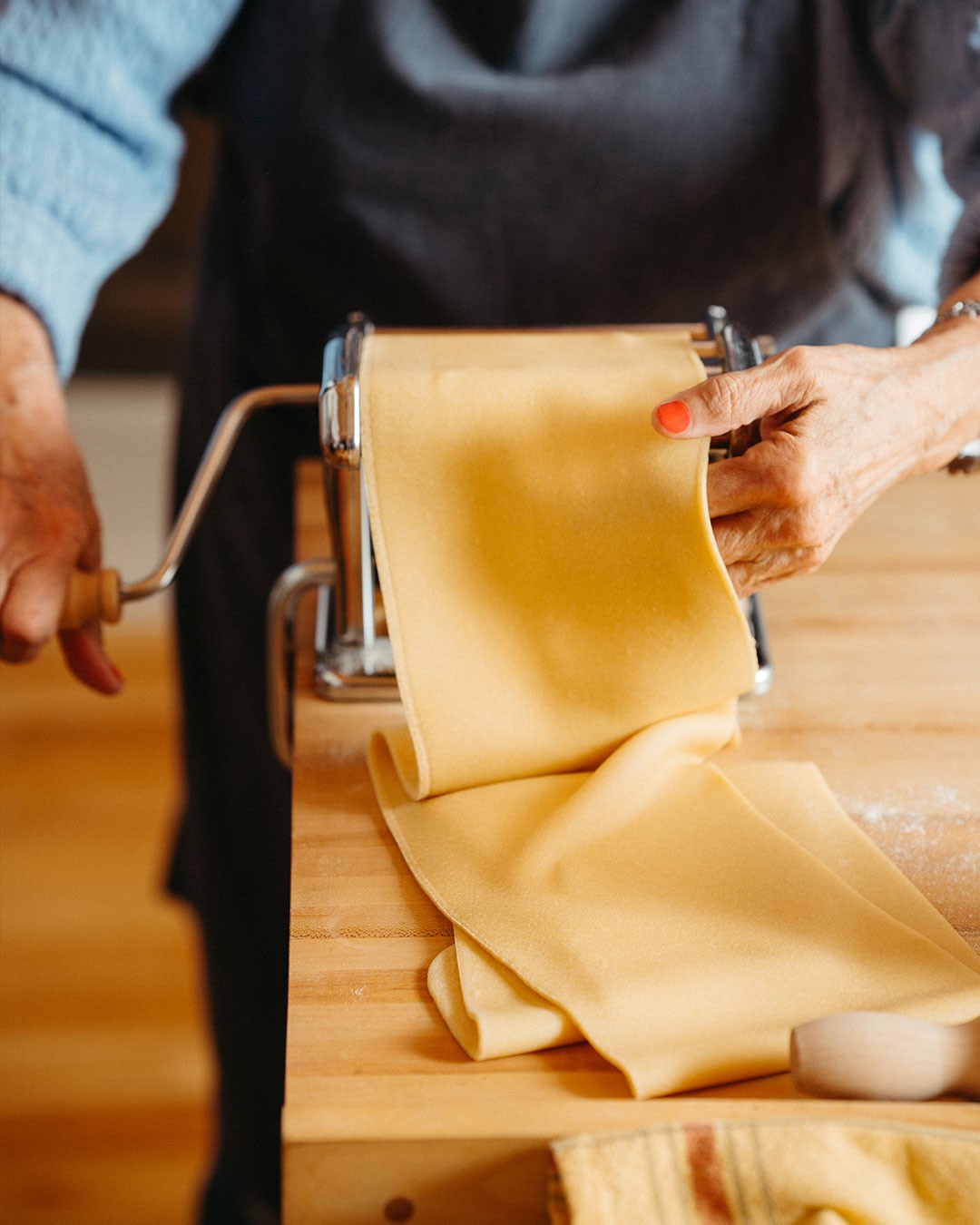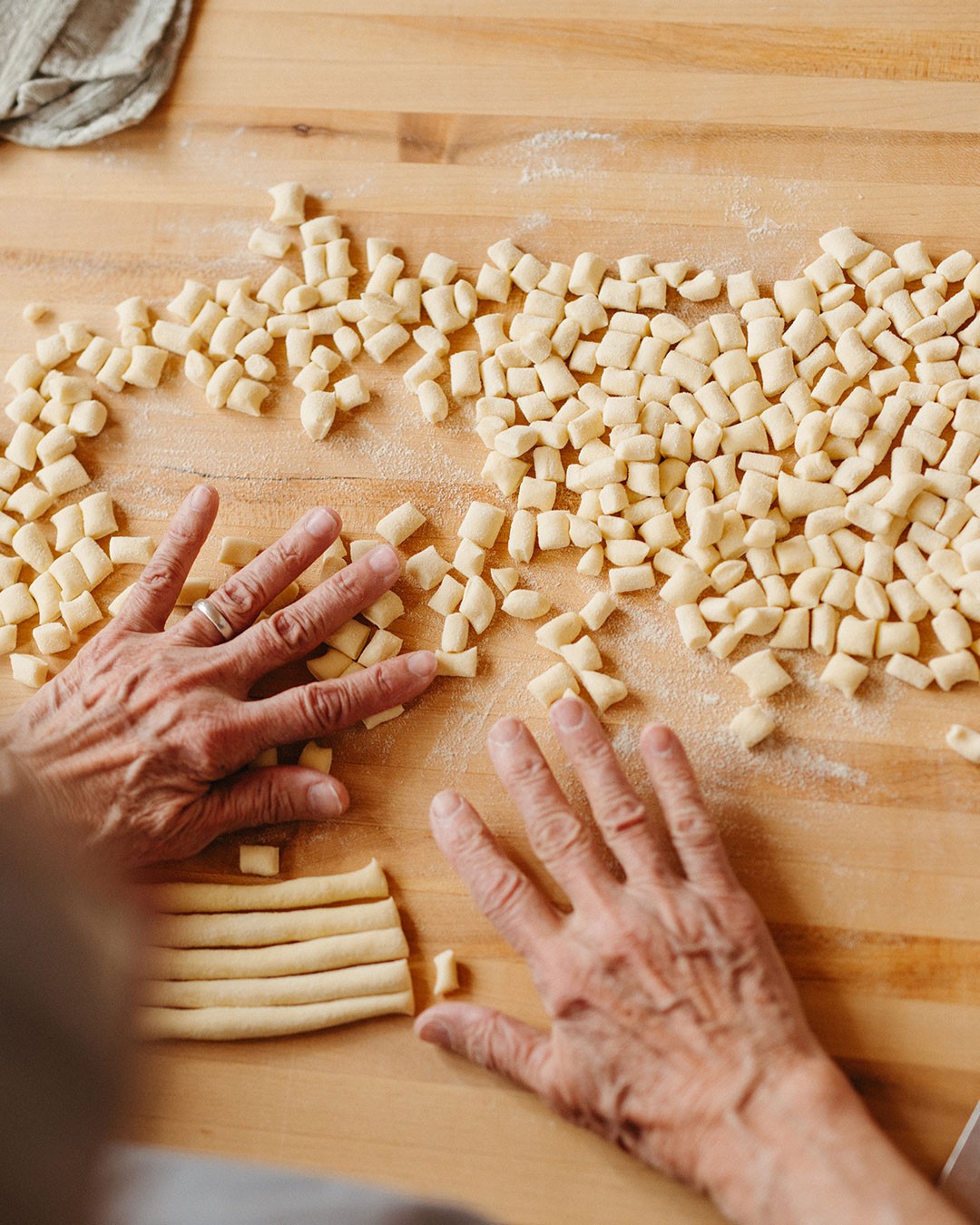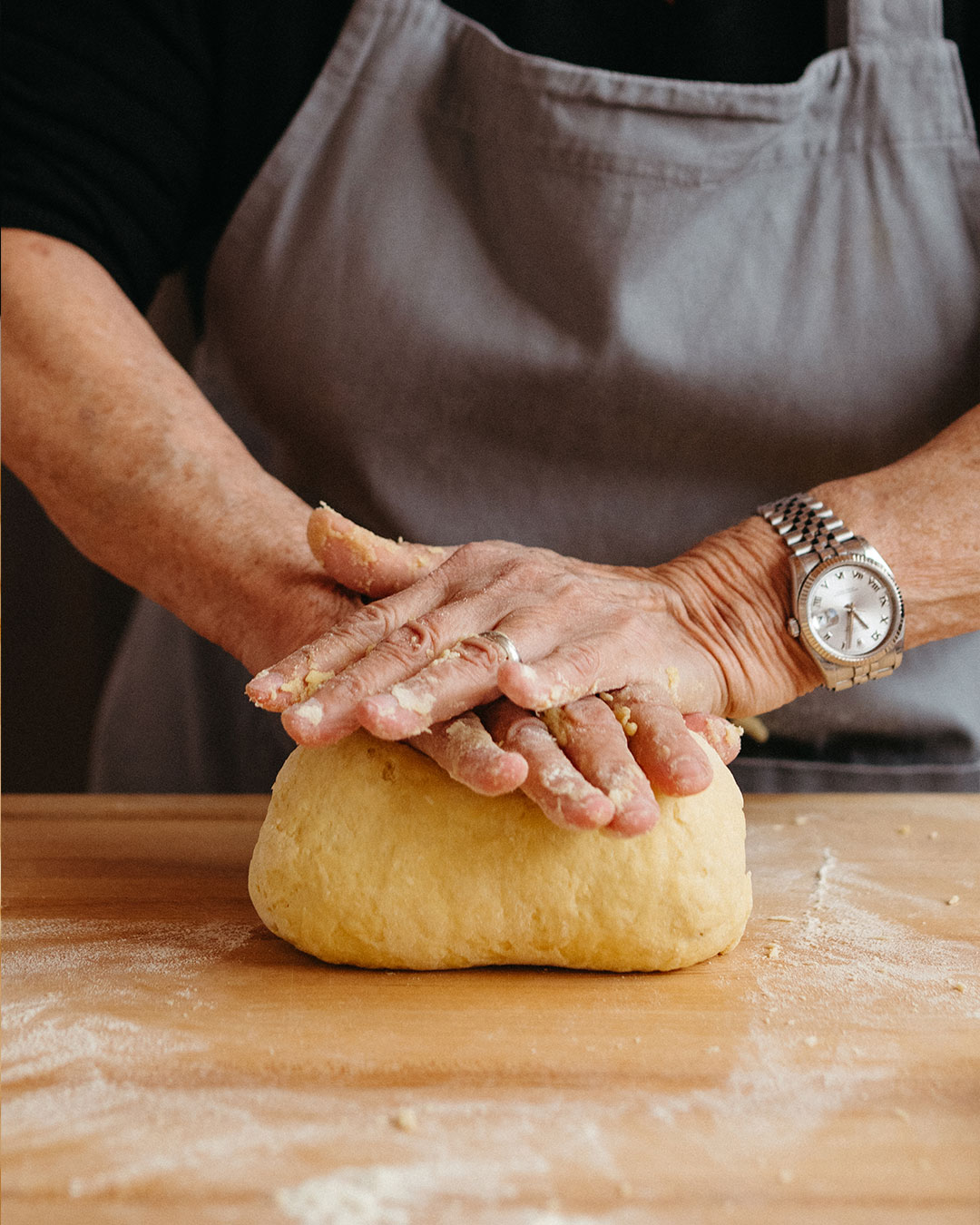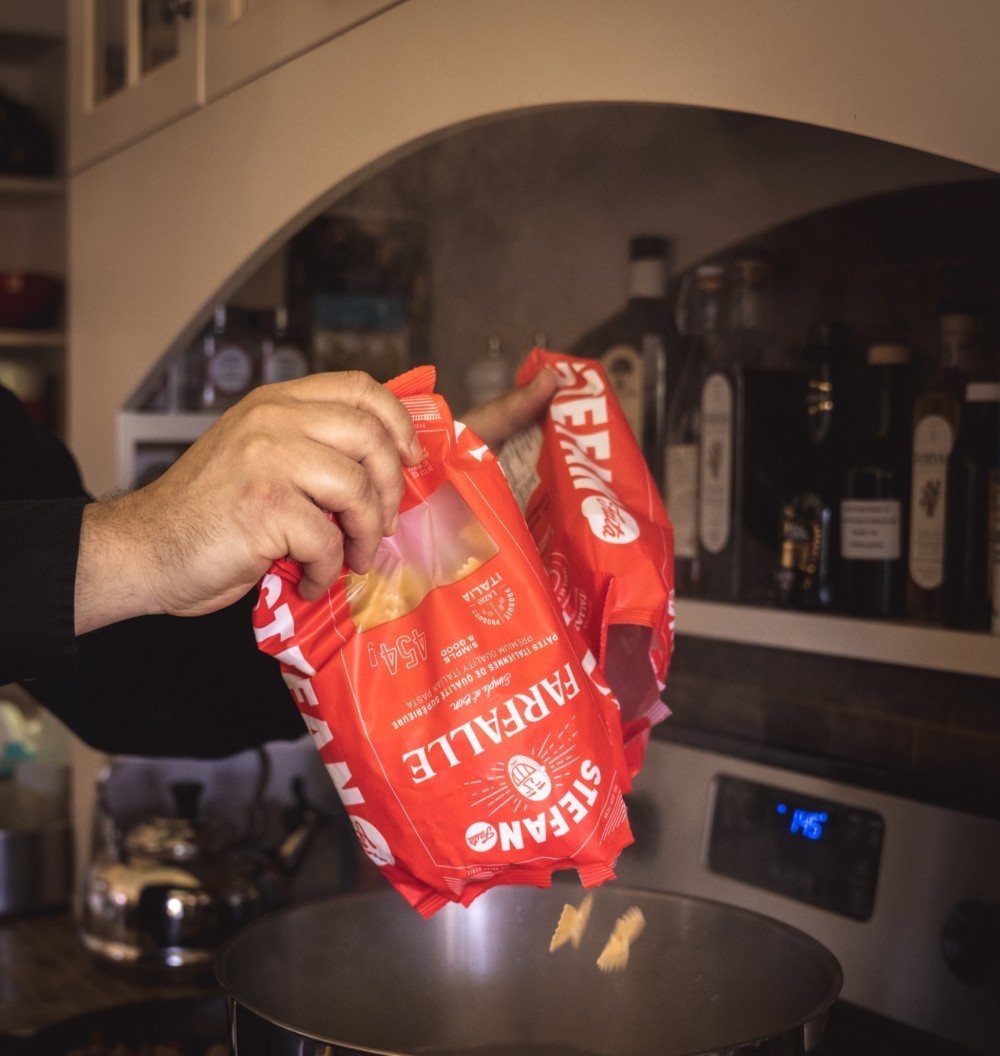Pasta, Mamma Mia!
We bet you no one will be surprised to read this: we love pasta in all its shapes and forms. Dry pasta is so convenient and versatile, we couldn’t live without it. But homemade fresh pasta… so soft, so delicate, so wonderful. It’s perfect for special occasions, but also for those everyday moments of life when you need a little touch of magic. Plus, spoiler alert, homemade pasta is not that hard to make!
We’re asked many questions about fresh pasta, and we get it—the subject is vast, and it can feel a little intimidating. But we promise that getting your hands dirty is worth it in this case. To help set you up for success, we’ve rounded up the basics of pasta fresca!
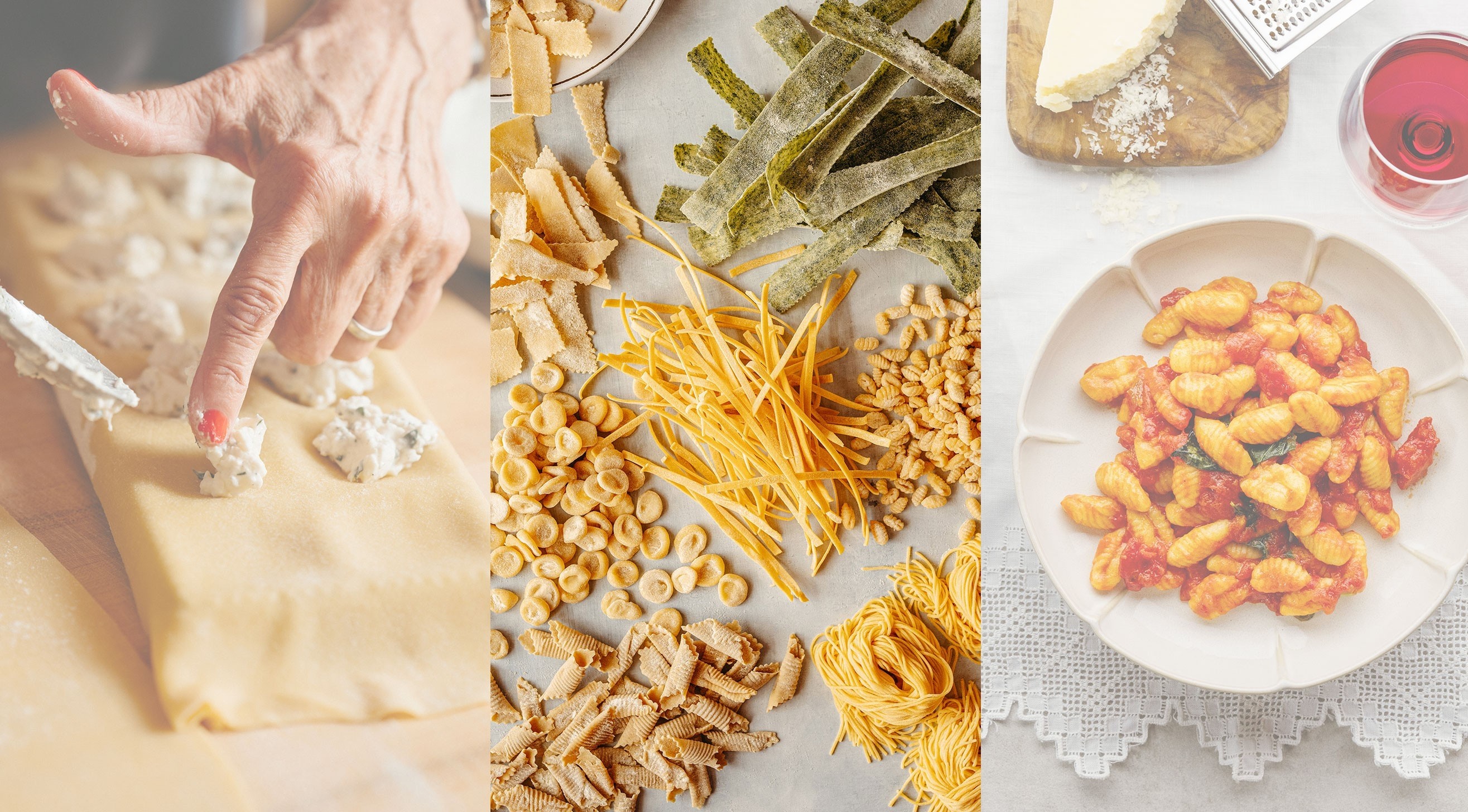
1. Go for Quality.
First things first. Fresh pasta is just flour and water, and often, eggs and a pinch of salt. That’s it. The general ratio to follow is one large egg per 100 grams of flour, keeping in mind you might have to add a bit more of one or the other. With an ingredient list as minimal as this, it makes sense to go for high quality. The all-purpose flour in your pantry will do just fine, but if you can, go for the Holy Grail of Italian flour—farina 00. It’s giving James Bond vibes, no? In Italy, flour categories go from 00, to 0, then 1, 2, and finally, whole wheat, meaning 00 is the finest milling there is. And that is the ideal texture to get maximum suppleness while keeping that essential al dente mouthfeel after cooking. Some people also use semolina flour or a combination of different flours. You’ll soon find what works best for you!
2. Tool Up (But No Need to Overdo It).
And speaking of flour, it should be noted that different varieties yield different weights. In this case, good-old measuring cups might lead to some pretty substantial discrepancies, so it’s smart to rely on a simple kitchen scale. Fewer chances of mismeasuring means more chances of success! A good scraper is also useful to cut the dough and keep that working surface tidy and clean. But most importantly—unless you’ve mastered the art of the matarello (rolling pin)—you should look into a pasta machine. It’s an easy-to-use, compact, and timeless tool. You basically pass the pieces of pasta dough through it, from the thickest to the thinnest level, making sure to pass the dough several times (refolding each time for the thicker levels) to get that coveted smooth and sleek finish.
3. Follow Your Rhythm.
If the mere idea of using a pasta machine triggers a stress response, fear not! Certain types of fresh pasta can very easily be prepared with no special equipment whatsoever—the perfect option for those who prefer to start small as they get a hang of things. Because let’s be honest, some homemade pasta projects are simpler than others. For a smooth introduction, we highly recommend cavatelli (you don’t even need eggs!) or gnocchi (not really pasta, but great to try your hand at homemade goodness). Then, you could move on to tagliatelle or ravioli, a slightly more advanced specialty that still lets the mould do most of the heavy lifting. And finally, for a bit of a challenge, we would suggest something like the almighty tortellini.
4. Get to Know Your Dough.
But whatever project you decide to take on, it all starts with a good pasta dough. First, you’ll have to get your kneading on. Know that elasticity is key. To get there, you’ll need to let the gluten develop properly, which means kneading for about 10 minutes (look for a smooth, elastic, still slightly tacky texture). You can use a stand mixer with the hook attachment but do make sure to finish kneading by hand to get a feel of things before you continue. Making homemade pasta is very much a sensory thing, so get your hands in there! At this point, you’ll want to let the dough rest for at least 30 minutes, covered with a humid towel or wrapped in plastic film. We know you’re excited to get to the finish line and eat, but this is ab essential step that should not be skipped. After kneading and resting, avoid working your dough too much as it might make it stiff and dense. Oh and don’t forget to flour your work surface and tools to stop things from getting sticky. When you’re ready to work the dough, try to do so quickly… without panicking! Fresh pasta dries up pretty fast, so it’s best to be efficient. Set up your working space in advance, lay out everything you need, and allow for enough continuous time. (A good excuse to turn off that phone and tune into the present moment!) Work one piece of dough at a time, leaving the rest covered. And just like that, you’re making pasta!
5. Adjust Your Cooking Instinct.
In Italian, we say la pasta non aspetta: pasta doesn’t wait. So ideally, you get cooking (or freezing) almost right away. But be careful! Fresh pasta cooks a lot faster than the dry kind—in 2 to 4 minutes only. The key is to cook the fresh pasta in a large pot of salty water and drain it as soon as it comes to the surface, while it’s still a little firm to the tooth. Now all that’s left to do is to settle on a sauce. Sky’s the limit, but fresh pasta (especially when made with eggs) is often paired with simpler, more delicate sauces that let the homemade goodness shine.
Bonus Tip: Have Fun!
Unless you’re starting a new job at a five-star restaurant tomorrow—relax! Sticky hands and a bit of flour on the floor are not that big of a deal. Food is about connection and having fun—so don’t let the little hiccups get you down. Practice makes perfect!

